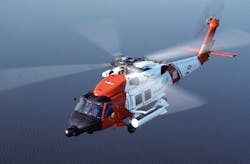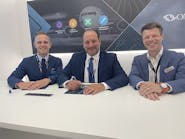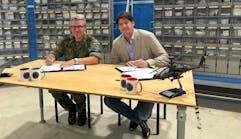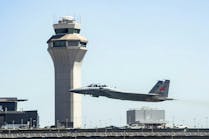Embodying founder Igor Sikorsky’s vision of the helicopter as a life-saving instrument, Sikorsky Aircraft celebrated 70 years of lifesaving partnership with the U.S. Coast Guard in November 2013.
The U.S. Coast Guard has eight domestic locations, and its aircraft fleet includes 42 Sikorsky MH-60 SEAHAWK variants known as JAYHAWK helicopters. Since the mid-1990s, the fleet has accrued more than 514,000 flight hours.
Engineering and aftermarket support
The longevity of this relationship serves as testimony in part to Sikorsky’s innovative engineering, offering some of the best search and rescue (SAR) and MEDEVAC helicopters in the industry. Yet, the best aircraft in the world is only as good as the crew that flies it and the support services that enable its full capabilities. Sikorsky’s aftermarket support offers integrated and comprehensive solutions tailored to customers’ fleet and mission requirements.
The Coast Guard has a five-year renewal maintenance contract that includes made to order spares, and overhaul and repair of dynamic components such as blades, transmissions, and rotors. The traditional sustainment contract offers a dedicated engineer, program manager, and field service and logistics support representatives.
“Our expertise in supply chain management is built on an extensive network of more than 1,600 suppliers. The key to aircraft support is based on parts availability, and we provide the expertise and material support foundational to mission readiness,” says David Adler, vice president of strategic partnerships.
The durability of Sikorsky’s JAYHAWK helicopter, coupled with the Coast Guard’s meticulous maintenance program and Sikorsky's integrated support, have been instrumental in life-saving missions the past seven decades.
Analyze fleet data
Supporting Sikorsky’s military and commercial customers, the company's Fleet Management and Operation Centers analyze fleet data, observing specific trends that help identify components with degraded performance.
This data mining enables timely and accurate maintenance recommendations. Additionally, the data is used to inform engineering and enhance aftermarket supply chain management processes. The goal is to provide an aircraft operator the opportunity to perform necessary maintenance before unplanned component failures disrupt flight operations.
“We want to turn unplanned maintenance into planned maintenance,” says Adler. “To date, our efforts have contributed to a variety of benefits: predictive health monitoring, focused troubleshooting, new condition indicators, and component overhaul interval extensions.”
While the U.S. Coast Guard’s civil support role focuses on coastal SAR missions, and the U.S. Air Force on its crash rescue missions, the U.S. Army employs Sikorsky BLACK HAWK HH-60L/M medically equipped air ambulance helicopters to transport wounded military personnel, and to perform civilian rescues supported by the National Guard.
In the field resources
The Sikorsky HH-60L/M helicopters are supported by various contracts – with Sikorsky providing spares, overhaul and repairs, technical and logistics field support, and manuals – including the latest updates. Deployed aircraft are supported by joint Integrated Program Teams that bring together engineering, field and logistic support expertise to provide a single, dedicated resource for issues in the field.
”Most daily aircraft maintenance is done as planned maintenance. By using our advanced Health Usage Monitoring System (HUMS) and other data sources, we also perform preventive maintenance. Operators are able to maximize aircraft usage while allowing maintenance to be performed proactively as a lower cost planned event,” notes Adler. “Operators are able to make fact-based decisions about maintenance, aircraft utilization, and fleet performance using these tools.”
Life support and patient safety
In 2010, Sikorsky expanded its product and service portfolio by acquiring LifePort Inc., based in Woodland, WA. Offering high quality turnkey solutions for military and commercial customers worldwide, LifePort features an extensive and proven history as a premier OEM for aftermarket mission equipment for both fixed and rotary wing aircraft.
Among its many products, LifePort offers high quality, state-of-the-art solutions for improving patient safety and survivability in medical transport missions. LifePort’s Patient Loading Utility System (PLUS) is viewed as the standard by which all multi-mission medical systems are judged.
LifePort’s products include rotating stretchers and integrated medical systems for rotary and large fixed-wing aircraft.
The Stanchion Litter System (SLS) is LifePort’s newest generation medical product, used to transport patients on a variety of military air cargo aircraft such as the C-130®, KC-135, C-17, and C-5. A secured five-year, fixed price, indefinite quantity contract with the Defense Logistics Agency facilitates SLS availability for broad purchase by the U.S. government and international military customers. C-130® is a registered trademark of Lockheed Martin Corporation.
Of particular note is the version of the SLS that was designed for the BLACK HAWK, which is the lightest, most advanced three patient litter system. Its modular design offers a simple five-minute install or removal without requiring any structural modifications to the aircraft.
LifePort also provides some of the market’s most extensive Advance Life Support (ALS) systems. These low-maintenance systems range from replaceable components to full multi-mission medical units. Engineered for both fixed and rotary wing aircraft, LifePort systems are designed to specific customer requirements and support mass-casualty, accident scene response and a multitude of other MEDEVAC missions.
International locations and support
“During the course of the last six years, Sikorsky has expanded its aftermarket management expertise to international locations, advancing customers’ in-country capabilities. Earlier this year, we announced plans to perform the first post-delivery SAR modifications to Brunei Shell’s Sikorsky S-92 helicopter,” says Adler.
Originally configured for offshore oil missions, the aircraft is currently undergoing a comprehensive conversion to a SAR configuration. The SAR equipped aircraft will provide services to customers in Brunei and the surrounding Southeast Asia region. The modification program is being executed at Sikorsky Helitech, which is the company's facility in Brisbane, Australia.
The aircraft modifications include a new automatic flight control system customized for performing SAR missions; forward looking infrared (FLIR); a dual auxiliary fuel tank system; dual rescue hoist; Triple Patient Litter System (TPLS); SAR seats; and a side sliding door large enough to accommodate standard patient litters with unrestricted rescue hoist access.
“The common denominator across all aircraft platforms is increased readiness and lower operational costs,” says Adler, “and Sikorsky offers customized aftermarket programs for our commercial and military customers worldwide.”
OEM-approved parts and maintenance programs for fixed budgets
The Total Assurance (TAP) and Powertrain Assurance (PAP) programs have been specifically developed in response to customers’ requirements to operate their fleets within a fixed, known budget, reducing the risks of extraordinary unplanned costs. Sikorsky’s TAP program covers up to 98 percent of the cost of parts replacement including airframe, dynamic components, avionics and consumable parts. The program covers corrective and preventative maintenance, including overhaul and repair components.
Contributing to improved aircraft performance as well as enhanced resale value, TAP provides customers with OEM approved parts manufactured to the latest drawings – backed by Sikorsky’s stringent quality system and worldwide distribution network. The program includes manual revision services, supply of parts required to comply with mandatory service bulletins, and access to a parts management tool – Rotorlink. Optional services include: (1) Sikorsky’s HELOTRAC 2X – a maintenance management program that records, manages and reports essential information for enhanced fleet management operations; (2) transportation costs for both inbound and outbound parts shipment; and (3) spare parts consignment – allowing customers to store parts at their own facilities.
Similar to TAP, the PAP is geared toward operators who wish to take advantage of a fixed cost per flight-hour program but choose to limit the coverage to the major drive train components. PAP covers the repair overhaul of main, intermediate and tail gear boxes.
Factors such as aircraft location, mission, utilization and contract period have an important role in determining the price-per-flight hour of TAP and PAP. By using a rigorous method of calculating the hourly rate and working closely with each operator to define unique needs and requirements, Sikorsky helps each customer make the best decision on securing the optimal support and service solution.
Adler sums up by stating, “Both TAP and PAP, in conjunction with our Fleet Management Operations Center technology, have demonstrated the capability of simplifying the management of material logistics by avoiding uncertainty associated with unpredicted and unbudgeted material costs.”
Regardless of mission – SAR, MEDEVAC, troop transport, surveillance and crowd control, VIP, etc., – maximizing aircraft availability while lowering operational costs remains the common goal.
Sikorsky continues to lead the way in advancing innovative support technology for commercial and military fixed and rotary wing aircraft worldwide.
Alicia Hutchins is senior marketing/communications specialist for Sikorsky Aircraft. For more information visit www.sikorsky.com.



